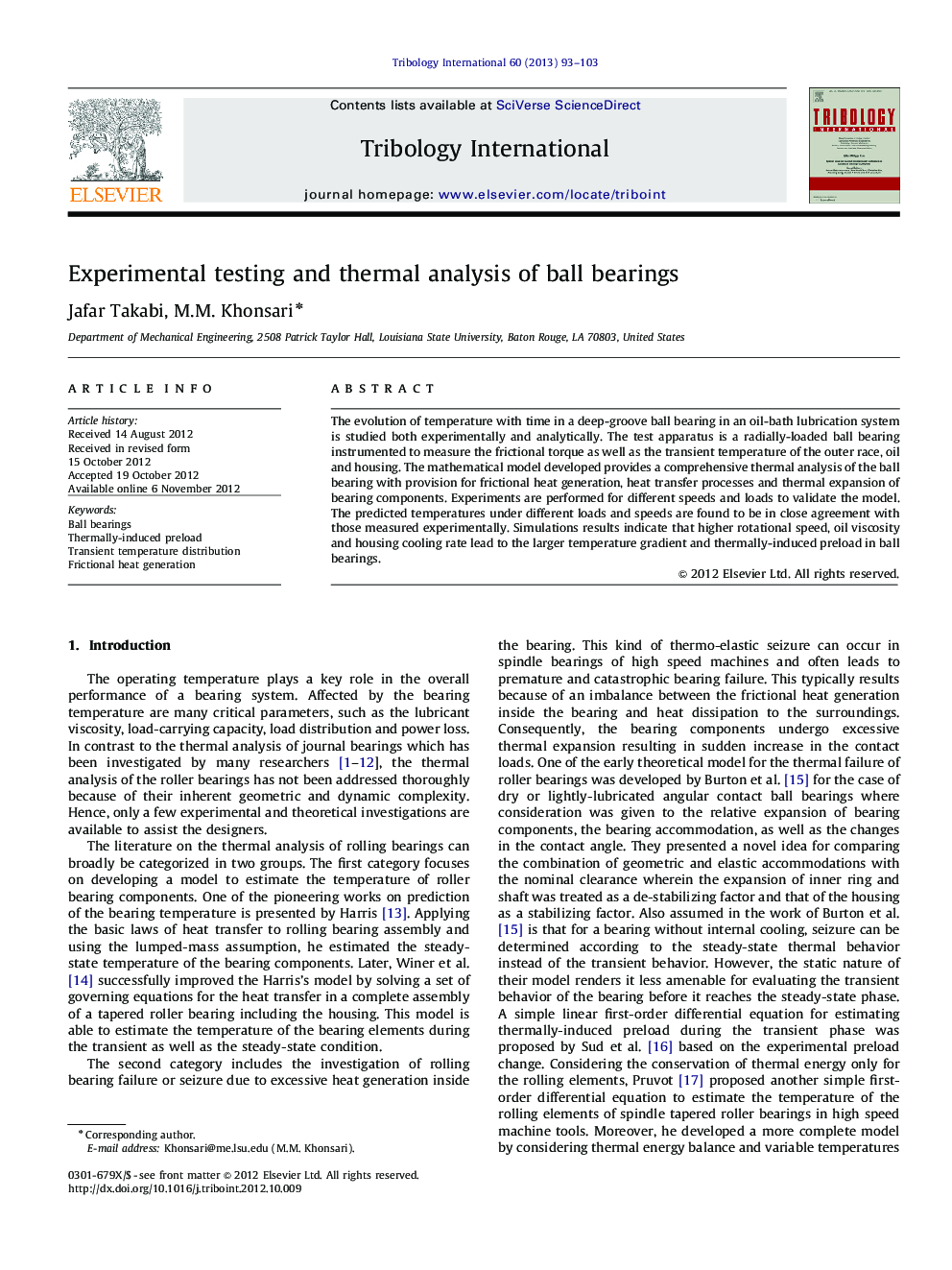| Article ID | Journal | Published Year | Pages | File Type |
|---|---|---|---|---|
| 615225 | Tribology International | 2013 | 11 Pages |
The evolution of temperature with time in a deep-groove ball bearing in an oil-bath lubrication system is studied both experimentally and analytically. The test apparatus is a radially-loaded ball bearing instrumented to measure the frictional torque as well as the transient temperature of the outer race, oil and housing. The mathematical model developed provides a comprehensive thermal analysis of the ball bearing with provision for frictional heat generation, heat transfer processes and thermal expansion of bearing components. Experiments are performed for different speeds and loads to validate the model. The predicted temperatures under different loads and speeds are found to be in close agreement with those measured experimentally. Simulations results indicate that higher rotational speed, oil viscosity and housing cooling rate lead to the larger temperature gradient and thermally-induced preload in ball bearings.
► A comprehensive model is presented to analyze thermal behavior of ball bearings. ► Comparison of simulation and experimental results shows good agreement. ► Results shows that the effect of rotational speed is more pronounced compared to the external load. ► Higher induced thermal preload due to higher viscosity and housing cooling rate is predicted.
